first post here
I was wanting some help with a fuzz pedal kit I recently bought on ebay. I'm relatively new to electronics and I'm no genius in this area, but I've been really frustrated for the past few days. I built this circuitboard exactly as I was instructed, yet it doesn't work and I can't figure out why.
The guy never send me a circuit diagram, but instead, more of a literal interpretation of what it would look like. Here it is -

If that is a little hard to make out, here is my own circuit diagram that I drew up (I apologize in advance for the poor quality and clarity of the diagram, I've never drawn one before)

When the switch is off, and the effect is bypassed, the guitar sounds fine, as if it was plugged in to the amp with no alteration to the sound. When I turn the switch on, I get a really crappy result. If the potentiometer is turned all the way to the left, I get a little bit of the original signal, but it's quiet and a bit lo-fi. When I turn the potentiometer to the right, I lose sound altogether... silence.
Another thing worth mentioning is that it doesn't seem to make a difference whether the battery is plugged in or not. I've tested the battery with a voltmeter and it's definetely working and has a lot of juice. I've also tested the battery socket on a breadboard incase the socket was faulty, but the socket is working fine too.
I know this isn't a lot of information to go on, but I was hoping that some of you veterans out there might be able to narrow it down for me. Based on this information, can anybody narrow down what part (or possible parts) of my circuit is faulty/busted? I have no doubt that the circuit is set up exactly the way I was instructed, and I was very careful with my soldering, there's no globby solder bridging the strips on the board.
Once again, I know this isn't a lot of info to work with, but I have no idea where to look or what to try. It doesn't work, and I don't know what to do about it